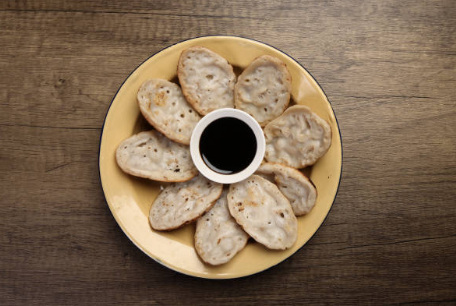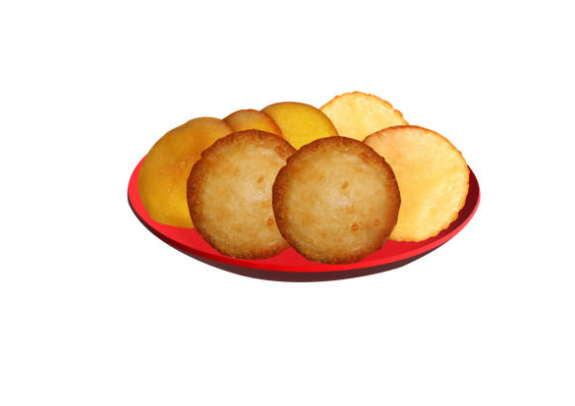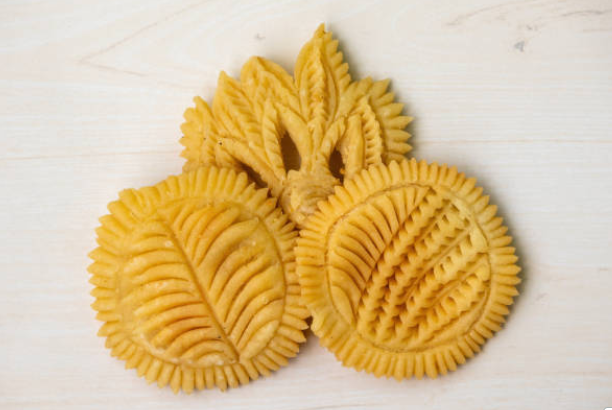What is Pitha?

Pithas are typically made of rice flour, although there are some types of pitha made of wheat flour. Pithas (piṭhā) are a variety of food similar to pancakes, dumplings or fritters. Pitha can be sweet or savoury, and usually made from a dough or batter, which is then steamed or fried. Very few varieties are oven-baked or boiled, and most are unleavened and cooked on a stovetop (or equivalent). Some versions may have a filling, garnish, or sauce. Few may be set or shaped after cooking. They are typically eaten as a snack with cha (tea), or as treats during special occasions.

3 Winter special pitha
Warm up your winter mornings with the heartwarming allure of traditional rice pitha recipes, a staple in the culinary heritage of Bangladesh, India, and their neighboring regions. Discover Bhapa Pitha, a cherished winter dish from the eastern part of the Indian subcontinent, including Bangladesh and Northeast India. This steamed rice cake, known as Tetli Pitha in Assam, is made from freshly ground rice flour, filled with a delightful blend of coconut and date molasses. It’s a symbol of new beginnings, capturing the essence of winter mornings as the sun’s rays break through the mist, warming the earth and the heart. In the realm of winter comfort foods, Binni Chaler Gurer Pitha stands out with its unique blend of flavors. Made from the aromatic Binni rice, this pitha combines the grain’s distinctive texture with the rich sweetness of jaggery. The process of making this pitha is a winter ritual, signifying togetherness and the joyous spirit of the season. As families gather to prepare this delicacy, it’s not just about the taste but the shared moments and memories that are being created and cherished. Completing the trio of winter specialities is Mera Pitha, known in some Bangladeshi regions as Mara or Daullah. Particularly popular in Sylhet and Mymensingh, this rice dumpling is a testament to the simplicity and depth of regional flavors. Combining rice flour, salt, molasses, and coconut, Mera Pitha is sometimes referred to as Gota Pitha or Bhapa Channai. Its preparation is a celebration of regional culinary diversity, bringing families together over the warmth of the clay stove, as the first rays of sun sparkle on the morning dew, creating soul-satisfying moments that are much more than just food – they’re a cultural embrace.
Poa Pitha/Teler Pitha-পোয়া পিঠা/তেলের পিঠা

Pitha is one of the most delicious dessert and one of the most toughest things to make (in my opinion). Not only they require many trials and errors but it also need lots of tips and tricks from the experienced ones! Normally in Bangladesh many pitha are traditionally vegan, so I must face my fear and try to make them sometimes!
So today I tried to make Poa Pitha or Teler Pitha. Tel means oil in Bangla, and this pitha is fried in oil, that’s why its also called Teler pitha in many parts of Bangladesh. It is relatively easy to make but a small mistake can make the pitha non-edible.
The ingredients are not that exclusive, except for the rice flour that needs to be coarse.Other than coarse rice flour, we need jaggary/gur, wheat flour, lots of oil and bit of salt. If you don’t have jaggery, you can make this pitha with sugar too.
I measured all the ingredients before started making this pitha, even water too. First I heated 150ml water in a pot, when it started boiling, I turned off the heat and added jaggery to it. I stirred the jaggery until all of them are completely dissolved. Then in the same pan, I added the rice flour. I mixed them well until rice flour is evenly mixed with jaggery water. Then we have to cover the rice flour -jaggery batter for half an hour. In this half an hour the flour will absorb the moisture and become soft.After half an hour, I stirred the batter again, it looked thick.
Now I have added the wheat flour to the batter, I looked like it needed more water so I added little cold water at a time. Until the batter looked thick but runny, I kept adding cold water. Remember to add only cold water when the batter has wheat flour in it.
Then I a pot I added oil and heated to medium to low heat. When oil got warm enough, I added the first scoop of batter directly to the oil.
Also remember to use a ladle, so the shape and size of the pitha remains the same. In the aluminum pot, pitha were not being cooked properly. Look how the first few pitha turned out flat and sad.
However, then I changed the pot to cast iron pan. Even though the pan is not that deep, since its been used a lot, pitha did not get stuck on the bottom like the first pot. Aha I wish to use this pan from the beginning!
Look how beautifully puffed the pitha got!
Oh and I forgot to mention, I added some fennel seeds to the last half of the batter, but it is completely optional.
This pitha reminds me of the winter evening in Bangladesh, when its cold and foggy outside, and all family members gathered around in the kitchen, enjoying the warmth from earthen stove…makes me miss the moments I never had…
Recipe: Teler Pitha /Poa PithaIngredients:
Rice Flour (coarse) – 200g
Wheat flour – 75g
Jaggery- 137g
Hot water-200ml
Fennel- 1/4tsp (optional)
salt- 1/8tsp1. Dissolve jaggary in very hot water. Add rice flour to dissolved jaggery and rest the batter for 30mins.
2. After 30mins, add wheat flour. If needed add cold water to the batter. The batter needs to be thick but runny. Add salt.
3. In a cast iron pan (which has been used a lot), warm oil in a medium -low heat.
4. Use a ladle to scoop the batter and put it hot oil. Once half done, the pitha should be floating self. After floating, flip the pitha and fry for 1 more minute.
5. Use paper towel to soak extra oil. Don’t crowd two pitha at a time.
Enjoy Poa Pitha with Bangladeshi Cha/tea in the evening.
Source From: Vegan Bangla

